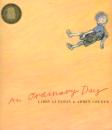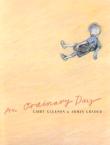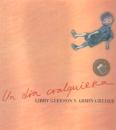AustLit
Latest Issues
AbstractHistoryArchive Description
'The journey to school is an everyday, grey-day experience for Jack. On the way to the bus stop, however, Jack is rescued by his imagination. Bit by bit, the ordinary world is transformed into a place of wonder and infinite possibilities.' (Sourced from Book Depository)
Notes
-
This is affiliated with Dr Laurel Cohn's Picture Book Diet because it contains representations of food and/or food practices.
Food depiction - Incidental
Food types - Everyday foods
- Everyday drinks
Food practices - Eating in - meal [breakfast]
- Food preparation
Gender - Food preparation - male [boy]
Signage n/a Positive/negative value n/a Food as sense of place - Domestic
Setting - Domestic interior
- Urban landscape
Food as social cohesion - Family meals [breakfast]
Food as cultural identity - White Australian characters
Food as character identity n/a Food as language n/a -
Also available as an eBook
Publication Details of Only Known VersionEarliest 2 Known Versions of
Works about this Work
-
Spatialities of Emotion : Place and Non-place in Children’s Picture Books
2018
single work
criticism
— Appears in: Affect, Emotion, and Children's Literature : Representation and Socialisation in Texts for Children and Young Adults 2018; (p. 129-145)'One of the key functions of literature and film is to represent and evoke emotion. Unlike conventional narrative approaches common to novels and films that rely on narrative action and dialogue to evoke emotion, picture books offer a different affect through minimal dialogue or description, aesthetics, and stylistic inventiveness. The concept of non-place offers an additional means for exploring how places and spaces in picture books embody some of the characteristics that Augé describes. Writers for young people often promote emotional engagement with characters and place by orienting their readers in both real and imaginary spaces, creating geographies of emotion.'
-
Imagination and Art
2009
single work
column
— Appears in: Viewpoint : On Books for Young Adults , Autumn vol. 17 no. 1 2009; (p. 9) Matt Zurbo discusses contrasting styles of storytelling in picture books and refers to the work of Armin Greder, specifically An Ordinary Day and Shaun Tan's The Arrival, as examples of image-based stories that use minimal, or no verbal text as opposed to the 'real life' style Graeme Base re-introduced, or the popularity and longevity of 'rhyming books for young children' inspired by Dr Seuss. He tells of his communication with Armin Greder in regards to one of his own 'text-heavy stories': "My agent sent him the story . His reply was a very thorough, terse letter detailing his obvious passion for stories with minimal text...In short, he let rip at me." While Zurbo admires An Ordinary Day as 'a most beautiful book', he argues that this particular style is still 'just a trend' and stories will continue to be told '...some with barely ten words...others rich with language'. While some stories are 'art-driven' others are structured through rythym or language or a combination of both and it is 'these differences, not trends' that, according to Zarbo, 'make a culture' and 'let the best of what we all have to offer come forth'. -
It'll End in Tears : Melancholy in Contemporary Australian Picture Books
2005
single work
criticism
— Appears in: JASAL , vol. 4 no. 2005; (p. 77-88) -
CBC Acceptance Speeches : Libby Gleeson
2002
single work
column
— Appears in: Reading Time : The Journal of the Children's Book Council of Australia , November vol. 46 no. 4 2002; (p. 5-6) -
CBC Acceptance Speeches : Armin Greder
2002
single work
column
— Appears in: Reading Time : The Journal of the Children's Book Council of Australia , November vol. 46 no. 4 2002; (p. 5)
-
Untitled
2001
single work
review
— Appears in: Reading Time : The Journal of the Children's Book Council of Australia , November vol. 45 no. 4 2001; (p. 19)
— Review of An Ordinary Day 2001 single work picture book -
Teaching Tradition
2001
single work
review
— Appears in: Australian Book Review , October no. 235 2001; (p. 61-62)
— Review of The Perfect Pet 2001 single work picture book ; Mega, Mega, Mates! 2001 single work picture book ; Nardika Learns to Make a Spear 2001 single work non-fiction ; Papunya School Book of Country and History 2001 single work information book ; Let's Get a Pup 2001 single work picture book ; An Ordinary Day 2001 single work picture book -
Untitled
2001
single work
review
— Appears in: Magpies: Talking About Books for Children , September vol. 16 no. 4 2001; (p. 29)
— Review of An Ordinary Day 2001 single work picture book -
Picture Book of the Year
2002
single work
review
— Appears in: Classroom , vol. 22 no. 4 2002; (p. 22)
— Review of An Ordinary Day 2001 single work picture book ; Horrible Harriet 2001 single work picture book ; My Dog 2000 single work picture book ; Papunya School Book of Country and History 2001 single work information book ; In My Backyard 2001 single work picture book ; The Red Tree 2001 single work picture book -
Reviews of the Shortlisted Books Relevant to Teenage Readers
2002
single work
review
— Appears in: Fiction Focus : New Titles for Teenagers , vol. 16 no. 1 2002; (p. 10-19)
— Review of Finding Grace 2001 single work novel ; Forest 2001 single work novel ; Yoss 2001 single work novel ; Mahalia 2001 single work novel ; Jinx 2001 single work novel ; When Dogs Cry 2001 single work novel ; A Different Sort of Real : The Diary of Charlotte McKenzie, Melbourne 1918-1919 2001 single work children's fiction ; An Ordinary Day 2001 single work picture book ; My Dog 2000 single work picture book ; In My Backyard 2001 single work picture book ; The Red Tree 2001 single work picture book ; Soldier Boy : The True Story of Jim Martin the Youngest Anzac 2001 single work biography -
The Children's Book Council of Australia : Annual Awards 2002
2002
single work
column
— Appears in: Reading Time : The Journal of the Children's Book Council of Australia , August vol. 46 no. 3 2002; (p. 2-13) -
CBC Acceptance Speeches : Armin Greder
2002
single work
column
— Appears in: Reading Time : The Journal of the Children's Book Council of Australia , November vol. 46 no. 4 2002; (p. 5) -
CBC Acceptance Speeches : Libby Gleeson
2002
single work
column
— Appears in: Reading Time : The Journal of the Children's Book Council of Australia , November vol. 46 no. 4 2002; (p. 5-6) -
It'll End in Tears : Melancholy in Contemporary Australian Picture Books
2005
single work
criticism
— Appears in: JASAL , vol. 4 no. 2005; (p. 77-88) -
Imagination and Art
2009
single work
column
— Appears in: Viewpoint : On Books for Young Adults , Autumn vol. 17 no. 1 2009; (p. 9) Matt Zurbo discusses contrasting styles of storytelling in picture books and refers to the work of Armin Greder, specifically An Ordinary Day and Shaun Tan's The Arrival, as examples of image-based stories that use minimal, or no verbal text as opposed to the 'real life' style Graeme Base re-introduced, or the popularity and longevity of 'rhyming books for young children' inspired by Dr Seuss. He tells of his communication with Armin Greder in regards to one of his own 'text-heavy stories': "My agent sent him the story . His reply was a very thorough, terse letter detailing his obvious passion for stories with minimal text...In short, he let rip at me." While Zurbo admires An Ordinary Day as 'a most beautiful book', he argues that this particular style is still 'just a trend' and stories will continue to be told '...some with barely ten words...others rich with language'. While some stories are 'art-driven' others are structured through rythym or language or a combination of both and it is 'these differences, not trends' that, according to Zarbo, 'make a culture' and 'let the best of what we all have to offer come forth'.






